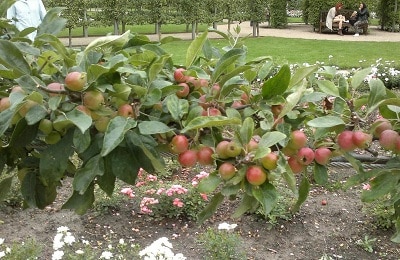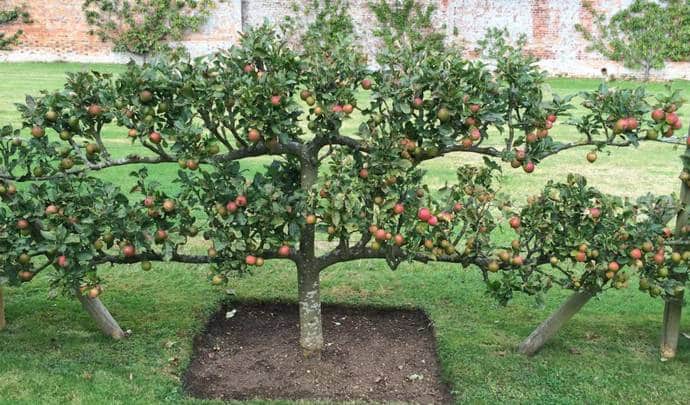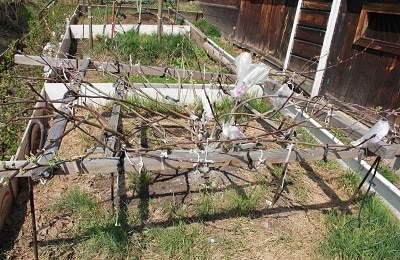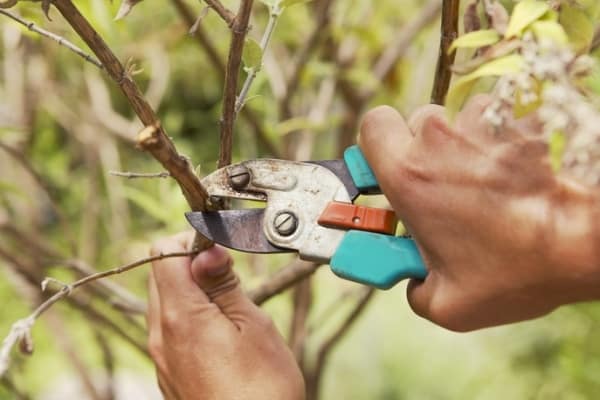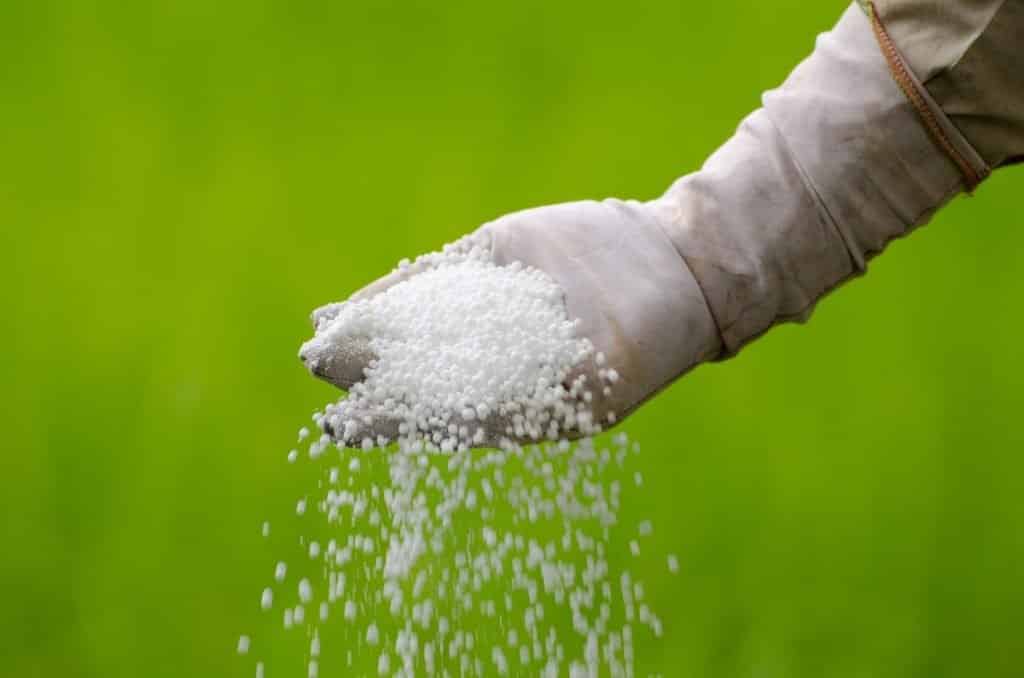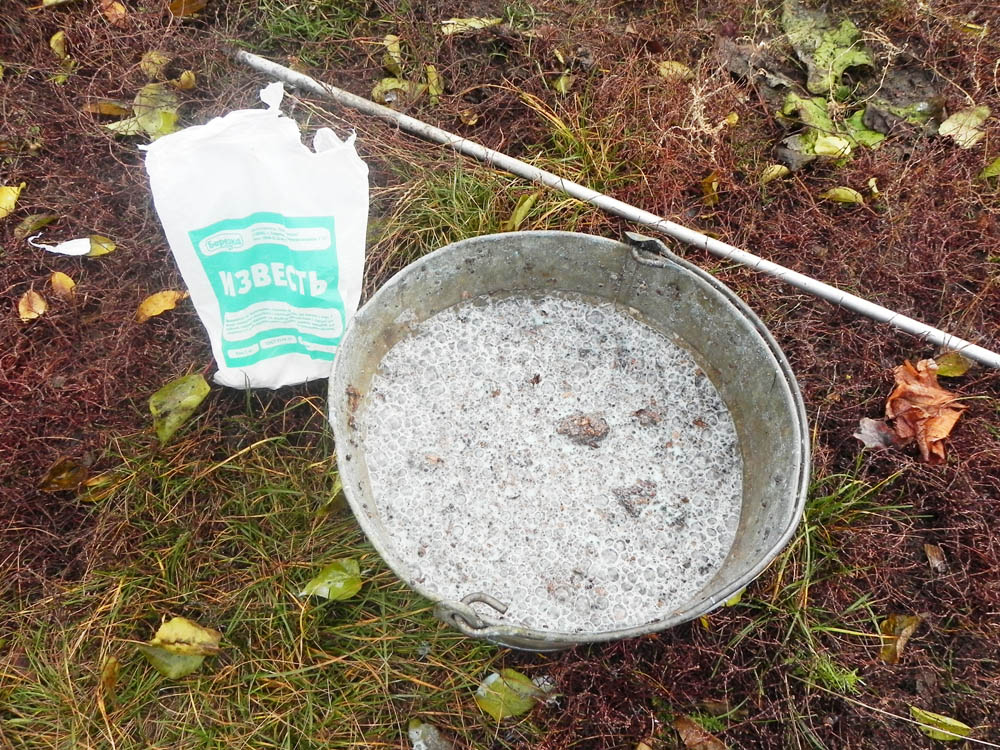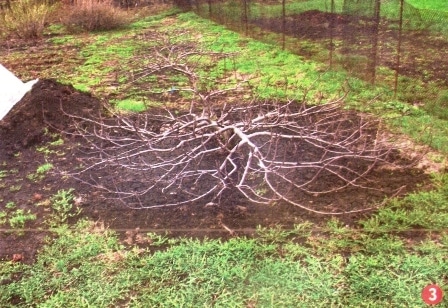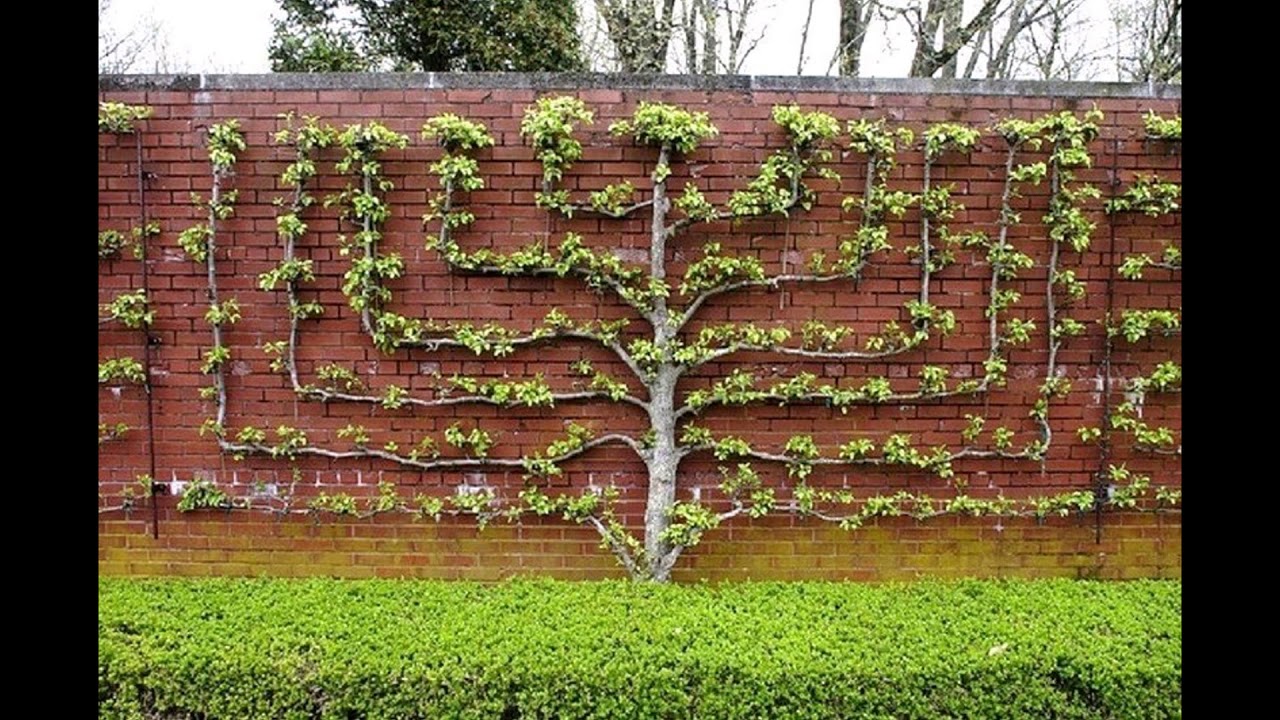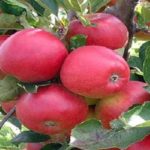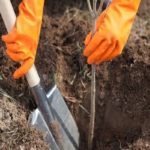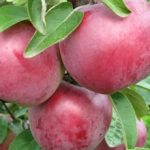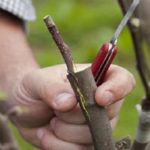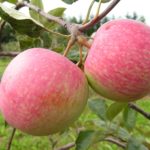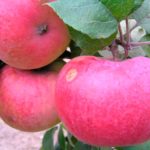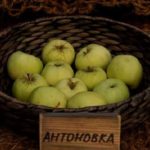The apple tree, not an ordinary one growing upward, but creeping, was the result of multiple experiments by Siberian gardeners systematically trying to grow a garden with high tree productivity. In other words, stlantsy are low-growing apple trees, only half a meter high, with an artificially formed crown, spreading its branches horizontally above the ground.
- Advantages of the creeping form
- For which areas is it recommended for cultivation?
- Specifics of growing the Slate apple tree in Siberian conditions
- Does the variety of apple matter?
- Landing rules
- Preparing the seedling
- Choosing a landing site
- Preparing the soil and holes for an apple tree
- Disembarkation dates and scheme
- Annual plan for the formation of shale
- in winter
- in spring
- In summer
- in autumn
- How to properly care
- Sanitary pruning and crown care
- Trimming Features
- Goals
- Scheme and timing of work
- Fertilizer application timing
- Watering
- Load control
- Graft
- Treatment of the tree trunk circle of soil
- Diseases and pests of stans
- Rodent protection
- Whitewash
- Weed control
- How to cover for the winter?
- Rootstocks for stlanes
- Reproduction
- Errors during cultivation
- Causes of infertility in women
- Ways to save a frozen apple tree
Advantages of the creeping form
Apple trees are not tall, only half a meter in height, which allows them to be covered for the winter. And in the Siberian climate, this is a guarantee of the survival of plantings and stable tree yields. By 3-4 years you can get the first fruits. And the tree itself will bear fruit for more than four decades, if the agricultural technology is correct.
For which areas is it recommended for cultivation?
Siberian gardeners were engaged in breeding creeping apple trees specifically so that apple trees could successfully grow and bear fruit in Siberia, with its winters with severe frosts and snowfalls.
Specifics of growing the Slate apple tree in Siberian conditions
If a heat-loving tree is planted vertically, it will die from the cold, and the owners will not get apples. Varieties of local selection survive in such conditions, but do not have a good taste, and they are small.
In the Siberian climate, it is possible to grow stlants when the crown of the tree is as close to the ground as possible, so that the snow covering it becomes a real protection from severe frosts. Only from creeping varieties of apple trees can owners expect good harvests, and their fruits will be large and tasty.
Does the variety of apple matter?
Stlantsy is not one specific variety.This is the name given to cultivated apple trees whose crowns have been shaped in a certain way.
This can be done with any variety. Moreover, their ripening time may be different. The main thing is to know how to grow them correctly.
Landing rules
To grow such a tree, you should know the specific rules of agricultural technology. Trees with a creeping crown have their own subtleties.
Preparing the seedling
According to the recommendations of experienced gardeners, preference should be given to seedlings grown specifically for a given area. An apple tree on local wildflower rootstock will take root better. And you can graft any variety you choose. A one-year-old seedling with a fibrous root system and a trunk of 80-100 millimeters is suitable. Its roots should be kept moist. They are usually dipped in earthen mash.
Choosing a landing site
Pay attention to how protected the area you have designated for the creeping apple tree seedling is. It should be on a hill, well protected from the piercing wind, and not in any way swampy. It would be great if the snow began to accumulate around the tree rather than being blown away from the area. Now about the soil. She must be fertile.
Preparing the soil and holes for an apple tree
There is no need for a deep hole, since the roots of the apple tree will be covered with surface soil. 2/3 of the hole is filled with soil mixed with humus. The soil is poured into a cone, and when planting, the roots of the seedling are evenly spread over it. They are covered with soil, which should be compacted and watered with 2-3 buckets of water.
Disembarkation dates and scheme
Slate apple trees are planted in autumn and spring.
- Work begins in September-October. With frost, rooted trees are tilted to the ground, secured with hooks. Any protective material will be suitable for shelter.They are released from their fastenings in the first days of spring, allowing them to grow freely.
- But the most favorable time for planting is early spring. The moment is chosen while the buds have not yet blossomed. After watering with peat, humus and other available materials, mulch the holes around the tree. And on the south side, a pile of straw is applied to the trunk of the seedling to protect the bark from sunburn.
Annual plan for the formation of shale
Slate apple tree seedlings are planted in different ways:
- at an angle of 40;
- directly.
A creeping apple tree spreads its branches directly above the ground. Therefore, it is extremely important for each skeletal shoot to have its own direction and be sufficiently illuminated so that fruit buds form better.
Sprouted shoots are unnecessary, so they are turned into fruit shoots by pinning them over the 4-5th leaf. As soon as new shoots grow, pinching should be repeated.
in winter
The apple tree is covered with material for protection. Snow will be an excellent way to protect it from Siberian frosts. If the tree is not covered enough, the gardener will have to do this.
in spring
To free an overwintered apple tree, the earth is raked away from its trunk. Perform pruning of excess shoots. You don’t have to do this, but it’s better to shorten it by 1/3 of the length of the annual growth. And do this in the first days of spring. This will allow the tree to branch well.
In summer
July is the month when it begins formation of the crown and apple tree bend down.
in autumn
All grown and elongated shoots are pressed to the ground with hooks. The trunk should be hilled up to 8-10 centimeters to protect the root collar from freezing.
How to properly care
It's time to talk about the intricacies of caring for a creeping apple tree.
Sanitary pruning and crown care
A novice gardener should especially carefully study how to prune fruit trees.
Trimming Features
Typically pruning is done in early spring. The cut areas are covered with garden varnish, and the dead branches are removed. If the cut is large enough, use oil paint, red lead or ocher. This can be done in the last days of spring and the first days of summer. The warmer it is, the faster the wounds heal. Slate apple tree seedlings are pruned to 4 or 5 buds. In this case, the crown is formed from newly emerging young branches, which are fixed horizontally with hooks. Branches should not touch the ground.
Goals
Why is pruning done? Due to the particularly dense crown of a creeping apple tree, it often:
- the tree begins to bear fruit late;
- diseases develop and pests spread quickly;
- apples become smaller and taste worse.
Scheme and timing of work
Begin pruning in the spring, before the process of sap flow begins. Professional gardeners manage to prune apple trees even in winter. But don't even try. Autumn pruning is allowed only after leaf fall. And yet it is worth doing this in the spring, since the cut site will not have time to heal before the onset of frost.
Fertilizer application timing
The apple tree needs feeding. When determining the amount of fertilizer, you should take into account the age of the tree and the area it occupies. After flowering, you can feed the plant by diluting a mixture of nitrophoska and sodium humanate in water. It is much easier to soak green grass clippings - you will get an excellent green fertilizer.
At the same time, trees are sprayed with urea. Then the apple tree will receive the required elements through the leaves.
In summer, fertilizing should contain nitrogen, phosphorus and potassium. It should be applied several times, every couple of weeks.For autumn feeding, substances rich in potassium and phosphorus are used. Nitrogen fertilizers are contraindicated.
Watering
The slates will have to be watered thoroughly, after lifting tree branches with supports. From the end of August, watering should be limited. This promotes the aging of wood.
Load control
Timely, high-quality pruning allows you to form a strong skeleton. It will give the tree the ability to withstand the stress of large harvests and provide the apple tree with large, tasty fruits rich in vitamins and other nutrients.
Graft
There are no differences in the grafting of stlanza. All you have to do is choose the right rootstock. Cut an annual cutting in the fall and save it until spring. The grafting is done on a solid branch, without waiting for the buds to bloom.
Treatment of the tree trunk circle of soil
In late autumn, it is recommended to dig up the soil around the trunk. It is also recommended to mulch with a layer of up to 5 centimeters - with material that is at hand.
Diseases and pests of stans
Among the most common:
- Scab of leaves and fruits - collect and burn diseased leaves, spray the tree with 1% Bordeaux mixture.
- Moniliosis - destroy infected fruits and leaves, in the fall collect all the apples and leaves that remain on the tree, and use Bordeaux mixture or copper oxychloride.
The greatest threat to apple trees is mice. But you can successfully fight them.
Rodent protection
The easiest way is poison. It can be added to the whitewash mixture, packaged in plastic bottles and left on the ground near a tree trunk. Rodents do not like strong odors, and strong-smelling grass tied to apple tree branches should repel them. As an option, cover the tree with spruce branches. Any of the above methods is quite effective.
Whitewash
This procedure is required for the apple tree in the fall. The solution is prepared from lime, clay and paste (fresh mullein can play its role). By applying the solution to the trunk and skeletal branches, you protect the tree trunk from the sun and all kinds of pests, such as insect pupae and eggs.
Weed control
In the fall, deep digging will be appropriate. Loosening and mulching will help retain moisture. In spring and summer, the soil should remain clean and free of weeds.
How to cover for the winter?
To cover the crown, gardeners use insulating materials and whatever is at hand:
- spruce branches;
- dry leaves;
- land;
- snow.
As soon as warm days arrive, the insulation must be removed.
Rootstocks for stlanes
For a slate apple tree, any variety can serve as a rootstock. The main thing is not fragile and resilient.
Reproduction
It is enough to dig in the stem of the apple tree so that small roots form where the branch touches the ground. Usually a small cut is made on the branch, it is deepened into the ground and secured with a wire clamp. Sprinkle the top with soil and water it a couple of times a week. In the fall, the mother branch can be cut off, and a new place can be allocated to the rooted plant. Another method of propagation is grafting.
Errors during cultivation
If the skeleton has taken the wrong shape, it will have to be corrected. To do this, the growing shoots are tilted to the side and literally pinned to the ground with hooks.
Causes of infertility in women
When purchasing an apple tree seedling, inquire when the tree begins to bear fruit. If you choose an early variety, expect a harvest after 3-4 years, if a late variety - 8.
You may not expect abundant fruiting if:
- landing was performed incorrectly;
- the crown was formed in violation of the rules;
- agricultural practices were not followed;
- the variety does not grow in Siberia.
Ways to save a frozen apple tree
If you notice that the plant has suffered from bitter frosts, take action immediately.
Main features:
- small whitish leaves;
- weakened state during the spring blooming period.
Rejuvenating pruning is required to save the tree. As a result, very soon new wood will appear and the apple tree will restore its functions. Growing a heat-loving tree like an apple tree in Siberian conditions is not easy. And even more so to expect significant harvests from her. Yet local gardeners have learned to cope with the Siberian climate, where winters are especially cold and frosts often return in the spring. And this heat-loving crop pleases Siberians with abundant harvests.

